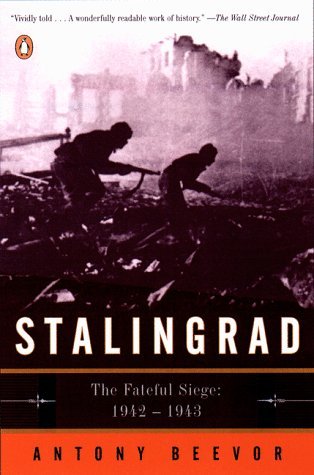More on this book
Community
Kindle Notes & Highlights
‘Russia’, observed the poet Tyuchev, ‘cannot be understood with the mind.’ The Battle of Stalingrad cannot be adequately understood through a standard examination. A purely military study of such a titanic struggle fails to convey its reality on the ground, rather as Hitler’s maps in his Rastenburg Wolfsschanze isolated him in a fantasy-world, far from the suffering of his soldiers.
‘Russia’, observed the poet Tyuchev, ‘cannot be understood with the mind.’ The Battle of Stalingrad cannot be adequately understood through a standard examination. A purely military study of such a titanic struggle fails to convey its reality on the ground, rather as Hitler’s maps in his Rastenburg Wolfsschanze isolated him in a fantasy-world, far from the suffering of his soldiers.
One of the richest sources in the Russian Ministry of Defence central archive at Podolsk consists of the very detailed reports sent daily from the Stalingrad Front to Aleksandr Shcherbakov, the head of the political department of the Red Army in Moscow. These describe not only heroic actions, but also ‘extraordinary events’ (the commissars’ euphemism for treasonous behaviour), such as desertion, crossing over to the enemy, cowardice, incompetence, self-inflicted wounds, ’anti-Soviet agitation’ and even drunkenness. The Soviet authorities executed around 13,500 of their own soldiers at
...more
One of the richest sources in the Russian Ministry of Defence central archive at Podolsk consists of the very detailed reports sent daily from the Stalingrad Front to Aleksandr Shcherbakov, the head of the political department of the Red Army in Moscow. These describe not only heroic actions, but also ‘extraordinary events’ (the commissars’ euphemism for treasonous behaviour), such as desertion, crossing over to the enemy, cowardice, incompetence, self-inflicted wounds, ’anti-Soviet agitation’ and even drunkenness. The Soviet authorities executed around 13,500 of their own soldiers at
...more
The barely believable ruthlessness of the Soviet system largely, but not entirely, explains why so many former Red Army soldiers fought on the German side. At Stalingrad, the Sixth Army’s front-line divisions contained over 50,000 Soviet citizens in German uniform.
The barely believable ruthlessness of the Soviet system largely, but not entirely, explains why so many former Red Army soldiers fought on the German side. At Stalingrad, the Sixth Army’s front-line divisions contained over 50,000 Soviet citizens in German uniform.
Rudolf Hess’s
Rudolf Hess’s


